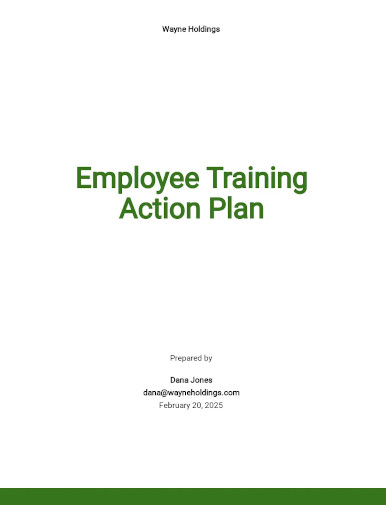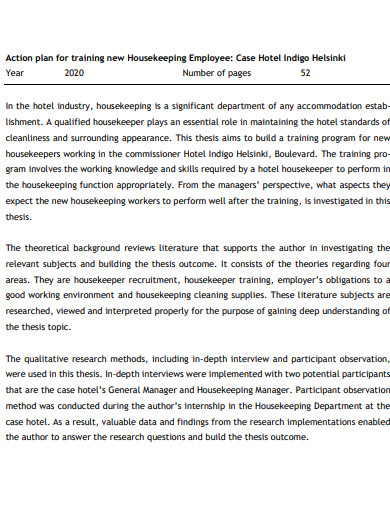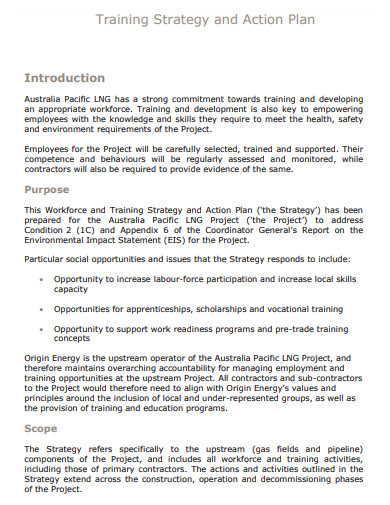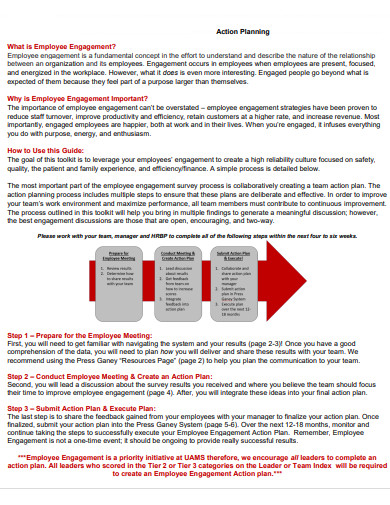Companies and businesses often put massive importance into creating a layout or a comprehensive plan for every project, venture, or task that they may have set upon themselves. A well laid out plan keeps the entire management and the rest of the project developers on track for most of the things that might take place during the entire duration of project development. Planning ahead is always good business practice. Highlighting the necessary steps ahead of time to prevent your whole administration from wasting valuable resources on ventures that might just not be as successful as initially projected. A well laid out plan brings the whole idea altogether, turning vision into actual reality, with tangible progress. The document is known as an action plan, and action plans can go massive lengths for the completion and fulfillment of any task or project that you aim to complete.
Planning ahead of time is always crucial because it allows you and the rest of your members to prepare for any potential obstacles that the management might encounter during the overall project development. It is vital to make sure that everybody has all the time they need to prepare and gather the resources that might be required, and that it’s possible for the entire team to participate, especially if the project is geared towards better employee training and engagement.
Now, writing an action plan might just seem fairly easy on paper, when in fact, it is not. You have to realize that there may be a lot of factors that needs to be considered in order to make sure that your plan works as intended. Before attempting to write the document, make sure that you are fully acquainted with it, especially with what the document looks like and how it works. First, check out these employee training action plan samples that we have listed for you down below. Once you’re familiar with what you’re about to write, feel free to use these samples as guides or even as templates for when you begin to draft your own employee training action plan.
3+ Employee Training Action Plan
1. Employee Training Action Plan

2. Housekeeping Employee Training Action Plan
3. Employee Training Strategic Action Plan
4. Sample Employee Training Action Plan
What Is an Employee Training Action Plan?
An action plan is simply a document that contains details, strategies, and outlines of the multiple components for both project planning and implementation. Regardless of the project or venture’s shape, type, and size, if you have a task that you want to see to the end, then the specifics don’t matter, and writing an action plan may be the best step that you can initially take. The document works like a checklist of sorts that lists the actions and the tasks the management has to complete in order to reach the objectives that they have set. It’s usually composed of not more than a couple pages, but the length of the document entirely depends on the scope, scale, and nature of the project that you are planning to do. Employee training action plans may cover a lot, especially if the nature of the training covers a lot of aspects that a new employee might need to learn.
The contents of your action plan like the various steps and strategies has to be detailed enough to make sure that the whole team that plan to work on it can immediately figure out what things and components they need o complete and accomplish. Vagueness and unnecessary jargons on documents like action plans will only lead to confusion rather than clarity, so it would be better to use simple language. And the document doesn’t even have to be flashy nor colorful. Just some well place visuals here and there would be enough to alleviate the crudeness of the plan, and bring some color and life into the document. Action plans may not seem much at all, but there can be so much power in knowing what you want to achieve, and how you plan to achieve it.
How to Write an Employee Training Action Plan
The writing process of an action plan is more than just writing down tasks on a piece of paper. You actually have to know what you’re doing and what you’re aiming for, and then explain that effectively and comprehensively so that everybody else is on the same page as you. There are a couple steps that you have to remember and keep in mind to ensure this, and get the best out of your document. Make sure that all of the components within are not convoluted, and that the steps are perfectly necessary and doable. These components that I’ve just talked about are listed and discussed in more detail below.
- Define your goal
Before you actually make your action plan, make sure that you have a completely perfect understanding of your goals and what you want to achieve. Don’t set your team up for failure by diving into a venture blindly without a clear path to take. Analyze the situation that you are in and the circumstances that you plan to work with. Apply strategic criteria like SMART to help you better screen your goals and see if these are actually feasible. - List down the steps
Write a checklist of the steps that you plan to take to reach the goal that you’ve just identified. Don’t bother with the order yet, what’s important here is that you identify the things that you need to do. Provide enough details and explain when necessary to make sure that the rest of the team are clear with how these tasks are supposed to be carried out. - Prioritize tasks and deadlines
After identifying all of your tasks, now is the time to think about their order. It would be best to organize them according to their consumption of labor and resources. Prioritize those tasks that require much, and be wary of those that needs a prerequisite task to be completed first before you can move on. Basically just arrange them chronologically. - Set milestones
Setting milestones and achievements along the way will give your team something to look forward to even with the deadline still quite far. Small victories slowly accumulate over time, and it would also boost your team’s morale. Also, it’s just best to give yourselves a pat on the back once in a while you know. - Identify the resources that you need
Be ready with the materials and the resources that you will need even before the development of your project has begun. Doing so will keep your focus on working on the tasks, rather than getting distracted mid-development because you have a shortage of tools and supplies. - Visualize your plan
Aside from setting all of these parameters, your plan should also be able to communicate the elements that you have previously identified. Highlight the most important components like the risks that you have foreseen, the tasks, chain of command, assignments, deadlines, and a complete inventory of the resources that you will need. Visualizing your plan will also help you determine if the plan can work, and if the parameters set are actually possible to accomplish. - Monitor, Evaluate, Update
The writing process of your action plan simply does not stop when you’ve put such details into paper. The document needs to be updated and reviewed over time as it’s a ‘live’ document. Keep track of how the plan is working with your current circumstances, and adjust depending on how things progress.
FAQs
What are the five steps of an action plan?
- Set SMART goals
- Create a list of actions
- Set a timeline
- Designate resources
- Monitor the progress
What is another example of an action plan?
In some other cases, action plans are used as communication devices that provides a simplification of the programs and projects that the plan focuses on.
What is an action step?
Action steps refer to the efforts or tasks that a company might choose to achieve the goals that they have set for themselves. Action steps are what’s commonly found within an action plan.
A well drafted and well written action plan goes massive lengths in making sure that the company’s goal and their vision has a good chance of being fulfilled. Even more when the plan itself is properly drafted, keeping everyone on the loop for the things that need to be done for said project. It just keeps things smooth. Though not without difficulties, but at the very least everybody knows how to deal with things with the help of the action plan.
Related Posts
FREE 9+ 30-Day Marketing Plan Samples in PDF | MS Word | Apple Pages | Google Docs
FREE 3+ Sales Team Action Plan Samples in PDF | MS Word | Apple Pages | Google Docs
Marketing Plan For Small Business Samples
FREE 7+ Fashion Business Plan Samples in PDF
FREE 10+ Sprint Planning Samples In MS Word | Google Docs | PDF
FREE 10+ Wedding Planning Samples in MS Word | Apple Pages | Powerpoint | PDF
FREE 9+ Monthly Study Planner Samples in PSD | Illustrator | InDesign | PDF
FREE 9+ Sample Curriculum Planning Templates in PDF | MS Word
FREE 10+ Teacher Development Plan Samples in MS Word | Google Docs | Apple Pages | PDF
FREE 10+ Basketball Practice Plan Samples in PDF
FREE 12+ School Business Plan Samples in PDF | MS Word | Apple Pages | Google Docs
FREE 7+ Client Strategic Plan Samples in PDF | MS Word
FREE 11+ Trucking Business Plan Templates in PDF | MS Word | Google Docs | Pages
FREE 7+ Small Hotel Business Plan Samples PDF | MS Word | Apple Pages | Google Docs
FREE 14+ Bakery Business Plans in MS Word | PDF | Google Docs | Pages



